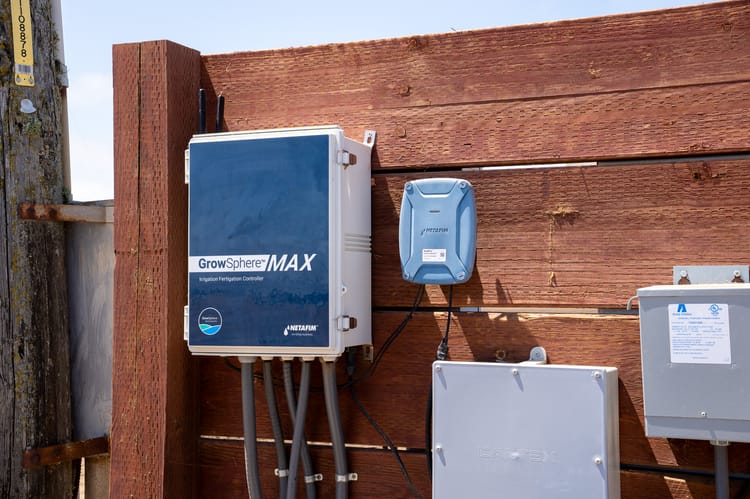Future-Proof Your Farm: Embracing Digital Transformation in Agriculture
In an era where global challenges like climate change, population growth, and resource scarcity are putting unprecedented pressure on the agricultural industry, the need for innovative solutions has never been more critical. The future of agriculture hinges not just on higher yields but on smarter, more sustainable, and tech-driven practices. Enter digital transformation.
Digital transformation is not just a buzzword. It's a fundamental shift in how farms operate, make decisions, and interact with their environment. Technologies like digital irrigation systems, IoT-enabled sensors, data analytics, and AI-driven tools are reshaping the agricultural landscape, offering unprecedented control, efficiency, and insight.
A New Era: Smart Farming Solutions
The concept of smart farming is the cornerstone of agriculture's digital revolution. At its core, smart farming uses advanced technology to monitor and optimize agricultural processes. From GPS-guided tractors to real-time weather tracking and soil moisture sensors, these tools empower farmers to make data-driven decisions that enhance productivity and sustainability.
Smart farming solutions streamline operations by automating repetitive tasks, predicting crop needs, and even detecting early signs of disease or pest infestations. These innovations allow farmers to respond proactively rather than reactively, reducing waste, maximizing input use, and protecting long-term farm health.
The Role of AgTech Innovation
AgTech innovation is fueling this transformation. Startups and industry leaders alike are pushing the envelope, developing tools that integrate satellite imagery, drone surveillance, blockchain traceability, and predictive analytics. This innovation isn't just for large commercial farms either. Thanks to scalable, user-friendly platforms, even small- and medium-sized operations can tap into the benefits of digital agriculture.
These technologies enhance transparency and traceability throughout the supply chain, enabling consumers to understand where their food comes from and under what conditions it was produced. They also make compliance with environmental regulations easier and more cost-effective.
As more growers adopt these technologies, the ripple effect extends beyond the farm. Financial institutions are beginning to factor digital data into lending models, insurance providers are offering incentives for precision-ag-based risk reduction, and governments are recognizing digital agriculture as a key pillar in national food security strategies.
Sustainable Farming Technology: Doing More with Less
One of the primary benefits of digital transformation is sustainability. Precision agriculture tools help ensure the 4 R's of nutrient and input management: the right source, the right rate, the right time, and the right place. By using technology to precisely manage inputs, farmers can reduce waste and increase efficiency.
Sustainable farming technology helps growers adapt to changing environmental conditions while making more informed and efficient use of water, fertilizers, and energy. It supports better decision-making in real time and opens new opportunities through practices that align with long-term resource stewardship and economic resilience.
The benefits are both ecological and financial—healthier soils, optimized inputs, and improved crop consistency all contribute to better bottom lines. For growers, this is about future-proofing their operations to withstand not only today’s challenges but those of the next generation.
The Power of Digital Irrigation Systems
Water is one of agriculture's most precious resources. With increasing competition for water and tighter regulations, efficient water management is no longer optional, but it's essential. This is where digital irrigation systems come into play.
Unlike traditional irrigation, which often relies on fixed schedules and manual oversight, digital systems use real-time data to optimize irrigation schedules based on weather forecasts, soil moisture levels, and crop growth stages. This minimizes both overwatering and under-watering, reduces energy costs, and improves yield quality.
These systems often integrate with other farm management tools, offering a holistic view of field conditions and enabling truly informed decision-making.
In many cases, these systems provide growers with peace of mind. Knowing exactly how much water and fertilizer has been applied at any given moment ensures consistency, especially when managing multiple blocks, crops, or even farms.
Looking Ahead: The Future of Agriculture
As the agricultural industry continues to evolve, digital transformation will play a central role in shaping its future. The farms of tomorrow will be connected, data-driven, and resilient.
Innovations will continue to emerge, driven by artificial intelligence, robotics, biotechnology, and climate modeling. These advances will enable even greater precision, efficiency, and sustainability.
But technology alone isn't enough. The future of agriculture depends on a mindset shift—an openness to change and a willingness to embrace new ways of thinking. Farmers, advisors, ag retailers, and policymakers must work together to ensure the full potential of digital transformation is realized.
The shift also requires improved digital infrastructure in rural areas, as connectivity remains a limiting factor in certain regions. Expanding rural broadband access will be essential for ensuring all farmers can participate in and benefit from this digital revolution.


Comments
We'd love to hear your thoughts! To enter a comment, type your name and email address.